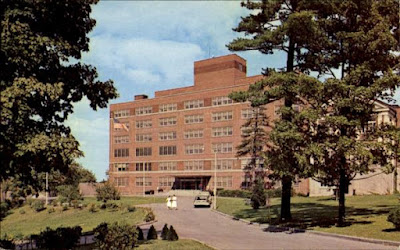Chaplaincy & Parish Ministry

I am both a parish minister of five years and a hospice chaplain of seven, these days doing both. The juxtaposition of doing these two forms of ministry in tandem has been very interesting and elucidating.
Lay people to a great extent don’t know this, but chaplaincy has always been seen as the illegitimate daughter of clergy, as a lower-form of religious ministry. I’ve always thought this notion silly but I cannot say I’ve never experienced the sentiment. Here is the truth though: As religion in America is experiencing a sea change, chaplaincy, specifically hospice chaplaincy, models for us the scaled-down yet just as professional skill-set needed for religious ministry in the new age. Let me take the next few paragraphs to explain what I mean.
Chaplains are basically ministers in public settings and not the church. Thus, we encounter all the diversity that goes with public settings. While most churches partake in “the most segregated hour in America” and struggle with a lack of diversity, chaplains, because of the nature of the work, experience diversity of various kinds firsthand. This is important as America grows increasingly diverse. This is to say, chaplains have important lessons to teach when it comes to ministry in a diverse setting.
Part of diversity is theological diversity. An essential chaplain creed is “meet people where they are.” We have the honor and advantage of meeting people on a personal level and inviting them to share their journey with us regardless of creed or lack thereof. Not having to worry about preaching a sermon, chaplains have the honor and luxury -- albeit an emotionally costly one -- of sitting down with a person and in no uncertain terms quoting Frasier Crane, “I’m listening.”
Our age is overwhelmed with so much talk. Words bombard us from everywhere. We are inundated with people selling or telling us something we are told we need to know or possess. We are forced to listen to all the voices swirling in the air like dust. We are forced to listen when what we really want is to take a quiet break, be ourselves, and be heard in that safe space. The first job description of the chaplain is we invite others to be who they are and tell their story. This is a gift the world is begging for.
Chaplains do not depend on a building called the church. We do not build churches or bring people in the church building's doors. We bring church - or the synagogue, the mosque, or the temple - to people, to people often at very vulnerable times in their lives.
Related, there is this fact: at such vulnerable times the heart of the matter cannot be avoided. The heart of the matter, what spirituality and faith seeks to sit with and answer to, is that impermanence, change, and death cannot be escaped or sidetracked. What do we do with this inevitable truth? That is the question. Before we are forced to face it head on, for example, in the context of a hospice diagnosis, we try very hard to avoid it, don’t we? Religions, spiritualities, and communities of faith are not immune to this tendency to get side-tracked. Hospice chaplains urge us not to avoid the question we too easily want to rationalize, spiritualize, and sermonize away. It is an urging needing a heeding. I pray the church finds its inner Frasier Crane and learns to use more the words, “we’re listening.”
I end by saying that the work of the parish minister is tremendously difficult. Part writer, part motivational speaker, part CEO, part marketer, part therapist, part shaman, part ceremonialist, the work of the parish minister is really complex, unfairly and unrealizably so. And I am in awe of my parish minister colleagues who do the job much better than I could ever do. I don’t how to make it simpler, but clearly it needs to be simpler. Our time and place demands it change or the church will continue to die and itself need hospice chaplaincy.


Comments
Post a Comment